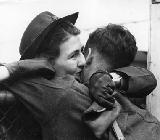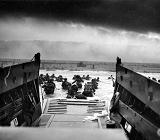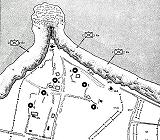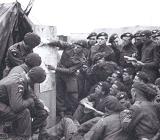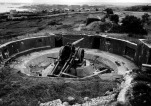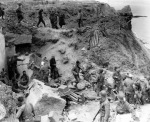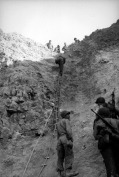The Ranger Assault on
the Pointe du Hoc
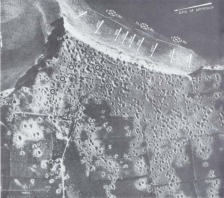
Aeriel view of Pointe du Hoc June 1944
Situated on the highest point between Omaha and Utah Beaches, the gun battery at Pointe du Hoc was considered unassailable by it's German operators. Positioned at the top of cliffs over 100 feet (30 meters) high the battery was perfectly placed to fire on the two Allied Landing Fleets of Force U and Force O landing the American assault troops into France. As the battery was 4 miles (6km) from the nearest Beach Landing Position on Omaha Beach it was thought that relying on troops assaulting from there to destroy the guns quickly was too risky. Instead this job was given to the 2nd Battalion of the US Rangers, under the command of Lt. Col. Rudder. June 6th 1944 was to be a difficult day for the Rangers, however, and after initialliy landing in the wrong place, Col Rudder rectified this and the Rangers managed to capture the battery in under 90 minutes. However, upon inspection of the gun positions they found that the cannon had previously been removed by the Germans. The Rangers then secured the area and waited for their relief force to break through to them from Omaha Beach. Despite the relief force turning up two days late the Rangers managed to hold off repeated attempts by the Germans to recapture the site. By the time the troops coming from Omaha Beach had broken through to their positions, less than 40 men of the original 225 strong assault force had not been listed as a casualty.
The Battle Sites/Sights
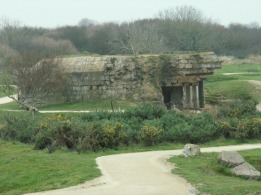
German Gun Bunkers at Pointe du Hoc today
This site is very rare in that it can still be viewed today much as it was left in June of 1944. When the fighting was over the bunkers and fortifications were largely forgotten until the 1960's when large numbers of curious tourists visiting the area prompted the French Government to preserve the site, today under the management of the American Battle Monuments Commission. Although grass now covers the area, the craters left by the 1500 tons of bombs and Naval artillery shells still litter the ground and the evidence of the fighting can still be seen in the bullet holes in the bunkers that cover the site, most of which are freely open to the public to explore. You can also see the shell crater behind the German Flak Bunker that served as Col Rudders command post during the two days that the Rangers were cut off. As well you will be shown the remains of the main German ammunition store, scattered up to 100 feet from the bunker itself, these pieces of which weigh up to 40 tons. It is estimated 18 tons of ammunition were in the bunker when it was blown up by the Rangers on June 7th. Just behind the ammunition bunker is one of the two the new bunkers built by the Germans to house the big guns, empty on D-Day. A third half built bunker can also still be seen, badly damaged by the Allied bombardment but the evidence of it's German builders still clearly visible scattered around it.
